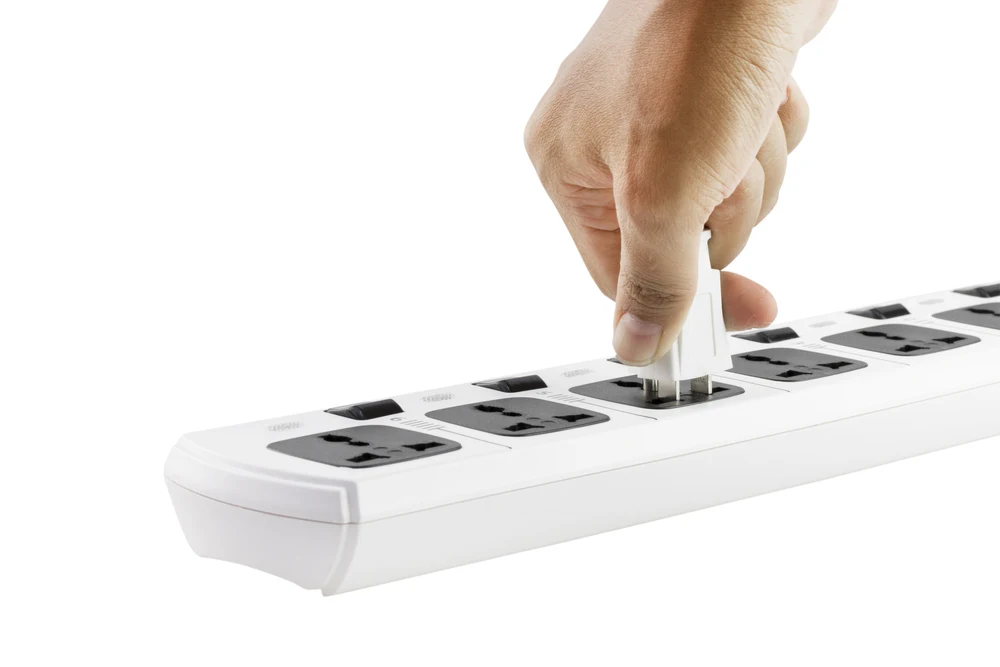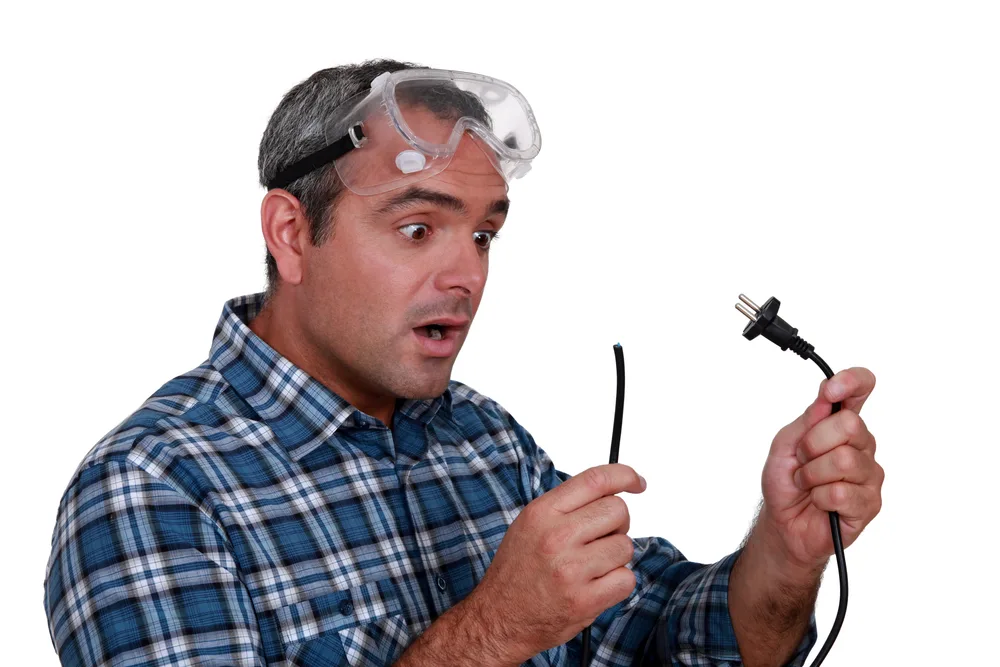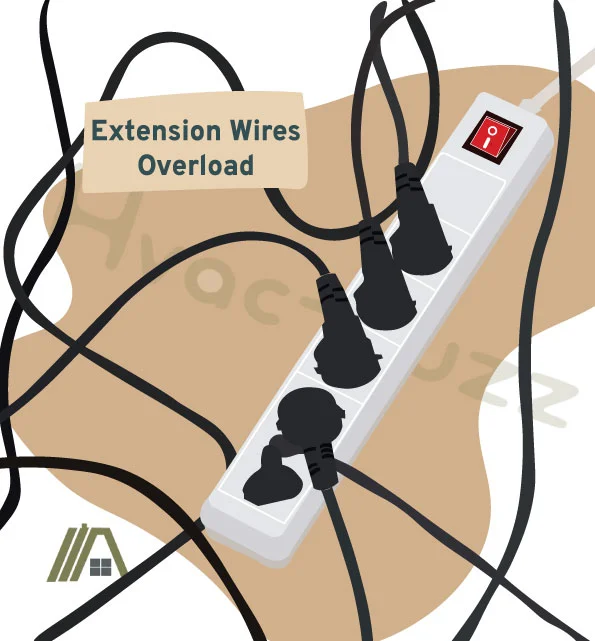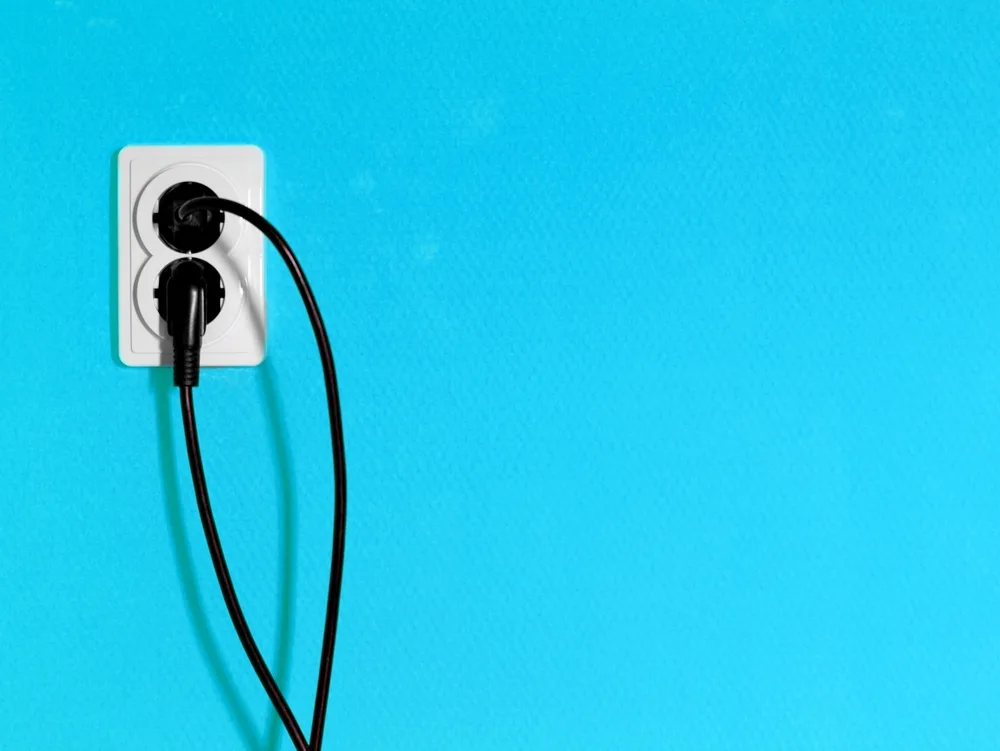It’s not always practical to install your new dryer right next to a wall outlet. Normally, when you can’t reach an outlet with an appliance, you just use an extension lead. You may not be aware of this, but it can actually be very dangerous doing this with large appliances, and if you’ve done it with your dryer, it’s not surprising that you’ve run into some issues. Dryers pull a lot of energy.
Not just any extension cord can be used with a tumble dryer and it’s important to be aware of what your dryer requires to avoid things like electrical fires. Even when using the correct extension, there are risks that you have to take into consideration.

Dryers need lots of power. Use heavy-duty leads or they will trip. If the lead wires are broken, it can trip. Replace broken extensions. Overloaded extensions trip. Ensure the cord is the right size and only the dryer is plugged in. The outlet might be causing the trip. Call an electrician for this.
Cord Cannot Handle Dryer
When using a heavy-duty appliance like a dryer, a greater amount of electricity is required to power it. Typically, the power needed for tumble dryers falls within a range of 1,800-5,000 watts.

To find the specific wattage rating of your dryer, be sure to check the manual that comes with the purchase or search for your model specs online.
Given the high volume of electricity a dryer needs, you’ll need an equally heavy-duty extension cord. There are three factors when considering the use of an extension cord: size, length, and wattage rating.
The size of an extension cord is based on the American Wire Gauge (AWG) system. The thicker and stronger the wire, and thus, the more appropriate for use with a dryer, the lower the AWG number will be. To power a dryer with a wattage rating of 1,800 watts, you need at least a 12 AWG extension cord.
AWG is also directly affected by the length of an extension cord. As the cord gets longer, the current-carrying capacity goes down. The extension cord for your dryer should never be longer than the standard cord of the dryer. Most dryer power cords are 6 ft or less.
If your dryer keeps tripping the extension lead, it’s most likely because the cord doesn’t have a high enough AWG to support the appliance.
If the cord doesn’t have an adequate AWG rating, the length is too long or the diameter too small to sustain proper wattage and the dryer will be receiving intermittent power. This is dangerous and the result is that your circuit breaker will trip to cut power to the risky connection.
The solution to this cause of the tripping is simple: get a stronger extension lead (amazon link).
Broken Wire in Extension Lead
Not only will an extension lead with broken wires ineffectively power your dryer, but it also creates a serious safety hazard. The Consumer Product Safety Commission estimates that 3,3300 residential fires are caused by damaged or misused extension cords.

To avoid serious complications, here are some ways to spot a faulty extension lead:
- Cord is hot to the touch.
- Cracked insulation of the cord.
- Electrical rating of the cord is too low.
- Cord is nailed or stapled to the wall.
It’s important to regularly check extension leads that you find yourself using again and again. Damage to the exterior covering of an extension cord is a common problem and means it’s time for a replacement (and maybe an adjustment to the way that you treat your extension!).
Nailing or stapling extension leads to walls is an easy way to break the outer coating and should be avoided if possible. It does make it look neater, but rather enclose it in cable raceways (amazon link).
If your cord is hot and tripping as a result of broken wiring, then it means that the circuit breaker is picking up an unsafe current flow to the dryer. Don’t take the risk of continuing to use the extension lead and replace it immediately.
There are many instructional videos on the web that concern troubleshooting and attempting to repair broken extension leads. While these may serve as temporary repairs, the best solution is to purchase a new extension lead or consultation of an electrician to be the safest.
Extension Overloaded
Extension lead overloading poses a serious safety hazard in any circumstance. Overheating is a telltale sign that your extension cord is being overloaded and can cause fires. Overheating can occur at the plug, socket, or even the entire length of the cord.

Extension leads can be overloaded when the appliance connected to the lead requires more watts than the cord can handle. In the case of a dryer that consumes significantly more watts than the average appliance, it’s even more vital that the proper extension lead is used, if at all.
Another way in which extension leads are overloaded is when multiple appliances are plugged into the same extension cable. If you are using an extension with your dryer, make sure nothing is never plugged into that same extension.
Preventing extension lead overloads is easy and something that all homeowners should be conscious of.
Dryers are appliances that use considerable amounts of electricity to operate, making it imperative to check any manuals or warnings that come with the appliance and extension to see wattage requirements and capacities. Choose your extension cable according to these capacities.
If you’re unsure if an extension lead can support your dryer, reach out to an expert or check online and learn more about extension leads and how to be safe.
It Might Be the Outlet
The electrical outlets in your house usually have one of two breaker sizes:
- 15 amps, which is equal to 1800 watts.
- 20 amps which is equal to 2400 watts.
Again, these outlets will be able to power most dryers that you’d have in your home.
If you are using a heavy-duty extension, but you have plugged it into a regular outlet as opposed to the 240V dryer outlet, then the extension is not the issue. Additionally, your 240V outlets can be incorrectly wired or damaged.
In these cases, the circuit is tripping because of the outlet’s issues.
Here are some signs that the wall outlet may be the source:
- Dimming or flickering lights.
- Sparking (from a breaker panel or fuse box).
- Hot outlet.
- Buzzing.
If your extension lead is in good condition and has the capabilities to power a dryer safely, these signs are important to look out for. I would also recommend contacting an electrician in case more than one of the outlets in your house may also be faulty.
The Dryer Is Leaking
If your dryer is leaking and you don’t know about it, then the extension cable could be sitting in water and it will trip. This is obviously a very dangerous situation.
Dryers Should Not Be Used With Extension
Although precautions can be taken for an extension lead to be used on a dryer, it should not be done. It is not safe. This goes for any appliance that is designed to generate heat.

Dryers especially require a lot of electricity, making it difficult to find the right extension lead. Without a proper extension, the wires can easily be too thin leading to overloading and overheating. Again, this is a serious safety hazard and can lead to fires.
At the most, an extension lead should only be used temporarily until the wall outlet can be equipped to support your dryer.
If you have the choice of using an extension with either your washer or your dryer, rather use it with your washer as these appliances typically pull a lot less energy than tumble dryers.
Sources
https://www.ius.edu/environmental-health-safety/files/power-cord-safety.pdf
https://www.inspirecleanenergy.com/blog/sustainable-living/how-much-electricity-dryer
https://portablepowerguides.com/dryer-into-extension-cord/
https://www.cpsc.gov/s3fs-public/5032.pdf
https://allinelectricinc.com/extension-cord-safety/
https://www.ul.com/insights/8-signs-you-may-have-problem-your-electrical-wiring
